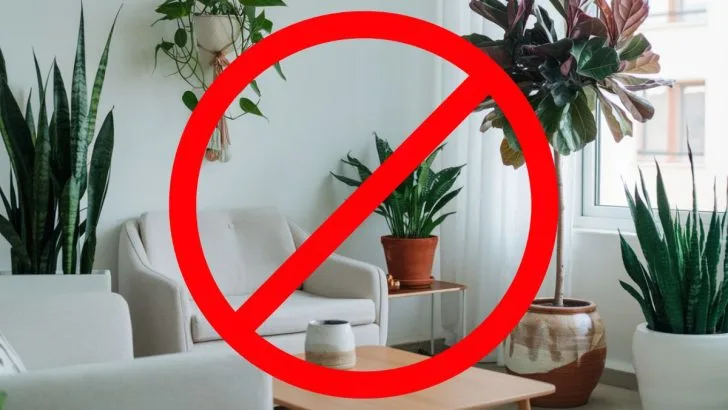Indoor plants can be the crowning glory of home decor. They add not just a splash of color but also a breath of fresh air, quite literally!
But did you know that where you place your greenery can be the difference between a thriving plant and a wilting one?
Today, we’re uncovering eight spots around the house where you absolutely should NOT place your potted pals. Some of these might just surprise you!
First things first, plants are like us in many ways—they need light, warmth, food, and a little TLC. Placing them where these factors are amiss is like sending them on a one-way trip to wilting city.
From the tops of humming kitchen appliances to sun-drenched windowsills, let’s dive into these no-no zones for plants and explore why they’re not as cozy as they might seem.
Ready to embark on this journey to help your houseplants flourish? Whether you’re a seasoned plant parent or a green thumb newbie, these tips will ensure your leafy companions feel right at home. Let’s dig in—pun intended!
On High Shelves Without Proper Access
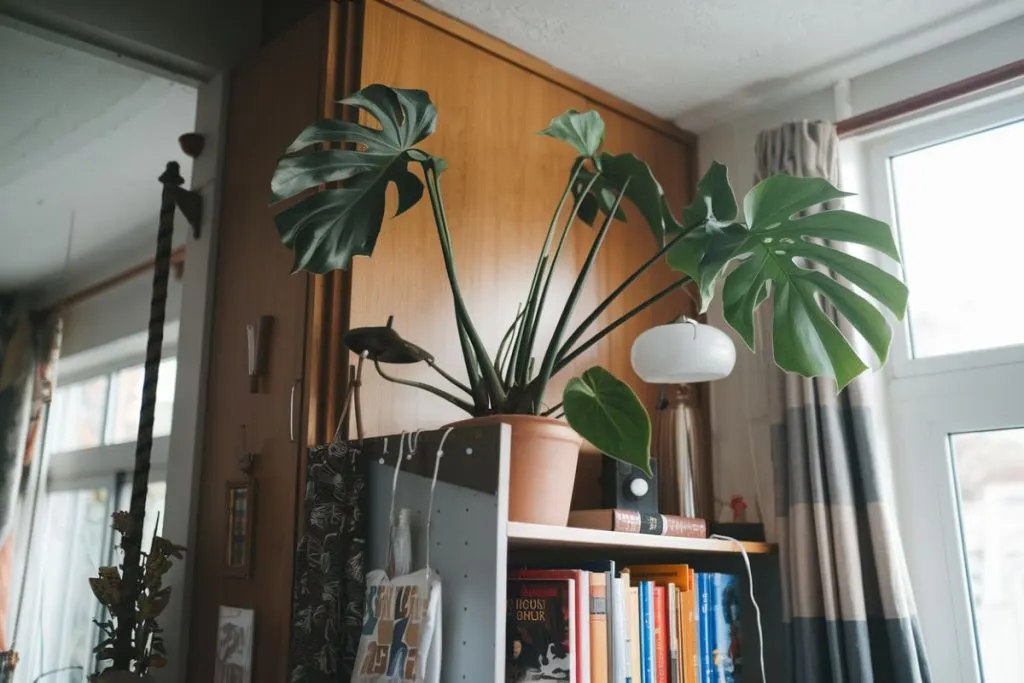
That tall bookshelf or high cabinet might seem like the perfect spot to showcase your favorite plant, but it’s often a recipe for neglect. Out-of-reach plants are easy to forget when it comes to watering, pruning, or monitoring for pests. Over time, they can suffer from underwatering or unnoticed damage until it’s too late.
Additionally, plants on high shelves often receive uneven light exposure. Toppling accidents are also common, especially if the shelf isn’t sturdy. Instead, choose lower, accessible surfaces where you can easily give your plants the care they deserve.
Under Ceiling Fans or Constant Drafts

Ceiling fans may keep you cool, but they’re no friend to houseplants. The constant airflow can dry out the soil too quickly and stress the leaves, especially for tropical plants that thrive in stable, humid conditions. Plants like ferns or calatheas, which rely on consistent moisture, often develop brown tips or droop when exposed to drafts.
Even more resilient plants like snake plants or pothos can suffer when placed under heavy airflow for long periods. To keep your greenery happy, position plants in stable spots away from fans, vents, or drafty windows.
On Top of the Refrigerator

While the thought of a cascading fern or a hanging pothos might titillate your aesthetic senses as it sits atop your fridge, it’s best to resist the urge. The top of a refrigerator might seem like the perfect perch, but it’s more of a perilous plateau.
Why’s that, you ask? For starters, it’s often a dark spot, and most plants need light like we need our morning coffee. If your fridge isn’t directly under a sunbeam, your plant buddy will be left in the shadows, craving sunlight.
Beyond the darkness, consider the temperature and humidity: the area around a fridge can be surprisingly dry and warm due to the appliance’s motor. This microclimate forces your plants to sip water from the soil like it’s going out of style, leaving you either with a parched plant or a rigorous watering schedule.
And let’s talk about practicality. Unless you fancy donning your climbing gear every few days to water your leafy friend, it’s best to find them a home at a more accessible level.
Next to a Heater
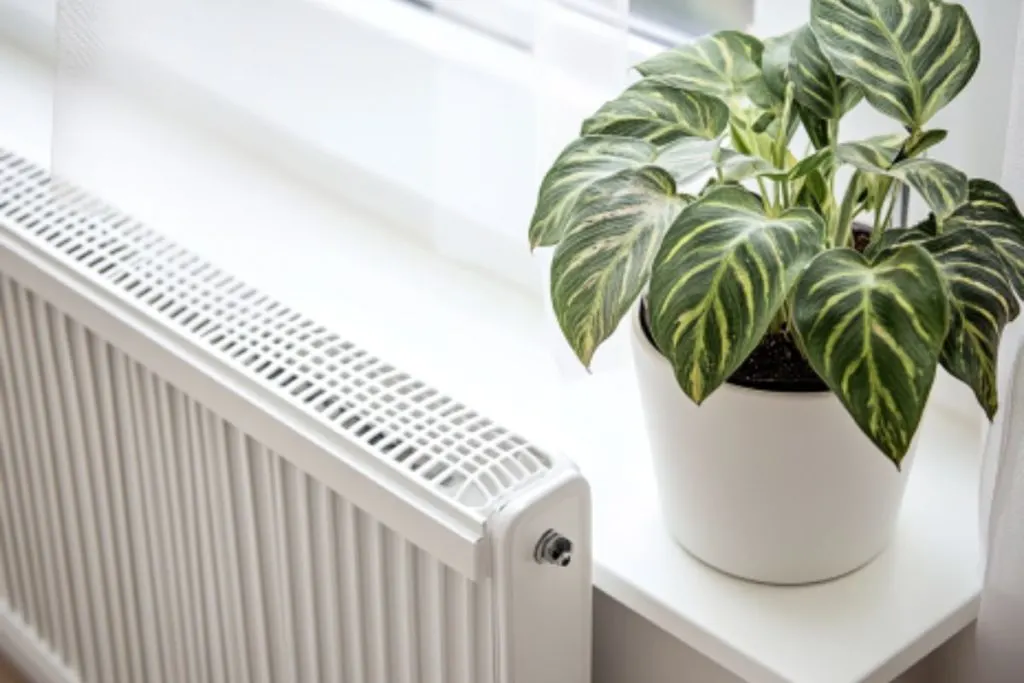
Heaters and plants go together like oil and water—literally! If you’ve ever cuddled up to a heater on a frigid day, you know the cozy toastiness it provides.
But what might feel like a warm embrace to us can feel like a desert to a plant. Heating vents, radiators, and space heaters tend to dry out the air, creating an environment that’s uninhabitable for most greenery.
The dry heat can cause plants to lose moisture at an alarming rate, leading to droopy leaves and wilted stems. Not to mention, the temperature fluctuations can be quite stressful for them.
If you’ve got succulents lounging just a couple of feet away from a heater, they might manage to withstand the heat, but moisture-loving plants like ferns or bamboo? They’re likely to protest fiercely and wither away.
To ensure your plants’ happiness, keep them at a safe distance from these heat monsters. A minimum of three feet for hardy varieties, and a considerable ten feet for those delicate ones, is wise. Imagine trying to sunbathe with a hairdryer blowing in your face. Unpleasant, right?
In a Dark Corner
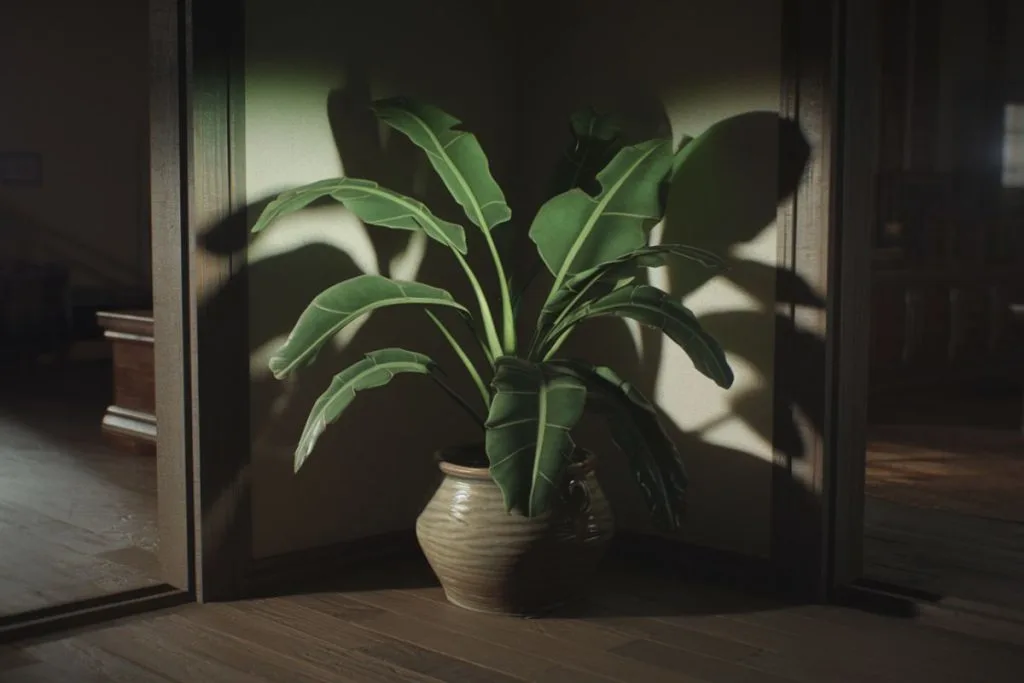
Corners are cozy for reading nooks but not so much for your green friends. Tucked into the corners, plants often find themselves in a light-deficient limbo, with one half perpetually staring at the wall. This lack of light can cause leaves to drop faster than you can say “chlorophyll.”
Without adequate lighting, a corner-bound plant may struggle to photosynthesize, leading to stunted growth or even a slow decline. You might notice your once vibrant plant becoming spindly and sparse, yearning for the sunshine.
If the corner is your only option despite these warnings, then certain low-light plants like snake plants or pothos can handle the challenge with a bit more grace.
To give your plant the best corner life possible, consider supplementing with artificial light or rotating it regularly so it gets equal exposure from all angles.
Too Close to Electronics
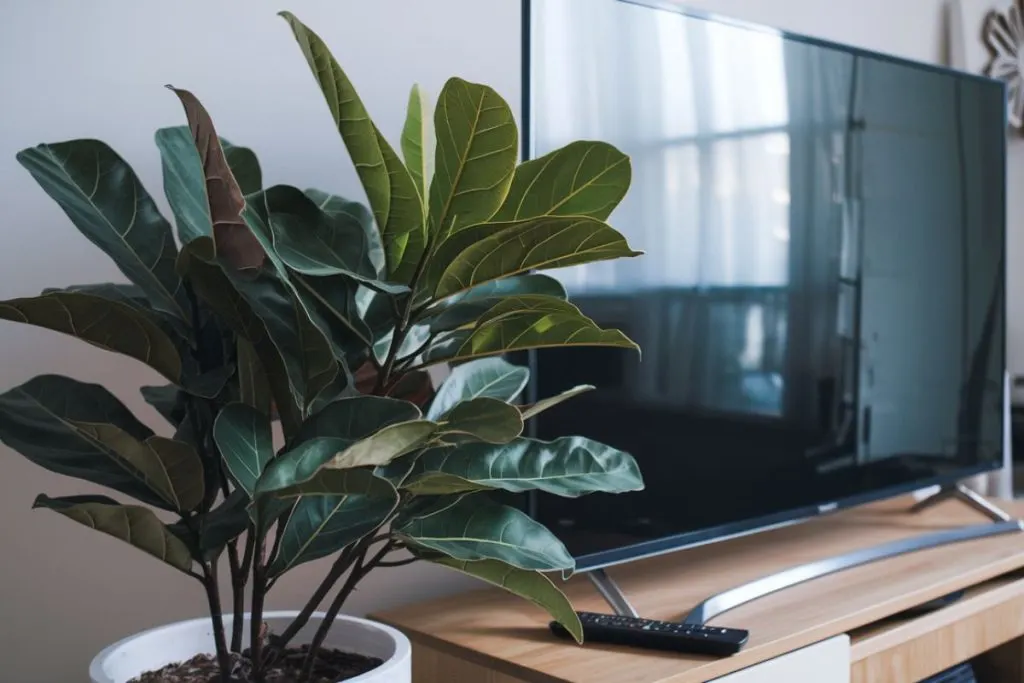
The modern workspace often has more wires than a spiderweb, but that’s no place for plants. While they might promise a zen ambiance, placing a plant too close to your computer, printer, or power strips could lead to trouble.
Water and electronics are notorious foes, and even the most careful plant caretaker can slip. A mist spray gone awry or a toppled pot could spell disaster for your gadgets. Moreover, the constant static and subtle heat emitted by electronics might not be the best company for your green pals.
To keep both your plants and your tech safe, position them with enough space to avoid accidents. Remember, plants can bring a sense of calm to your workspace without risking a short circuit!
In a Spot With Too Much Direct Sunlight
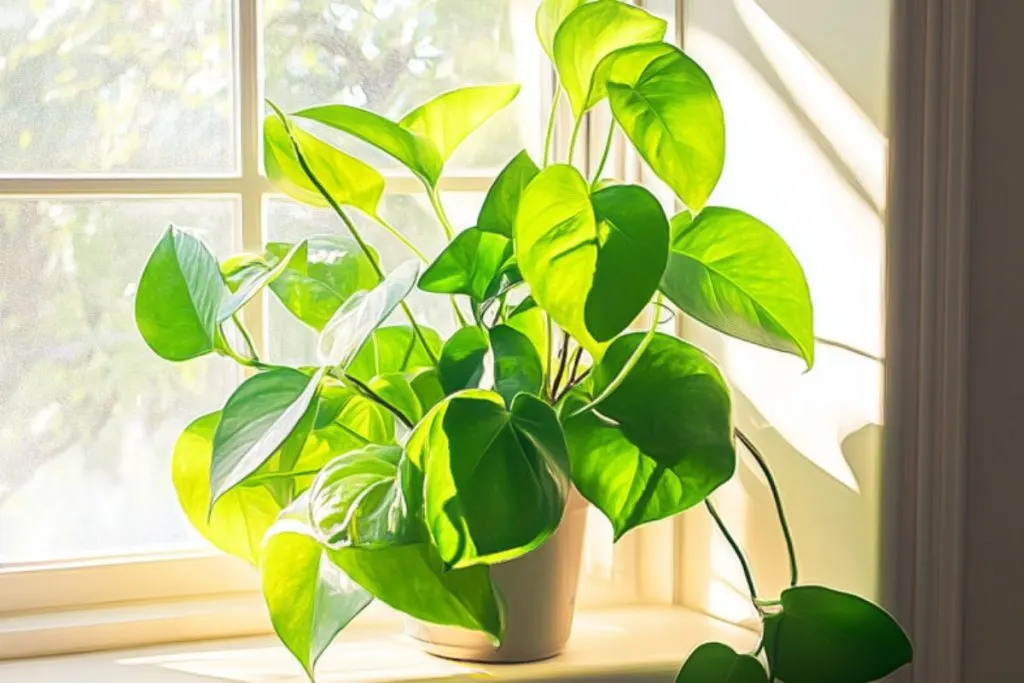
While sunshine is synonymous with growth, too much can be a fiery foe. Just like we can get sunburned, plants can suffer from sun scorch if placed in a direct blaze of sunlight.
Imagine sitting in direct sun all day without a break. Your plants will suffer similarly, with foliage showing signs of sunburn like browning edges or discolored spots.
Some might even lose the vibrant color of their leaves, turning pale and unsightly. To avoid scorching your greenery, always match the plant to its preferred light conditions—whether that’s full sun, indirect light, or a cozy spot in the shade.
In regions where the sun’s rays are particularly harsh, consider using sheer curtains to moderate the sunlight streaming through windows. This creates a perfect haven for your plants without compromising their need for light.
On Top of the Microwave

The microwave may seem like a convenient perch, but it doubles as a heat emitting and steam spewing giant. Much like refrigerators, microwaves can do a number on your plant’s health. They generate heat during use that can dry out soil, leaving plants parched and stressed.
There’s another reason to keep that microwave-top plant-free. Blocking the microwave’s vents with plant pots can affect its performance and even become hazardous. Not to mention, a heavy pot might damage the appliance altogether.
In conclusion, the microwave deserves to remain a plant-free zone. Instead, consider shelves or window sills that give your plants the proper environment to thrive without risking your kitchen appliances.
In the grand quest to turn our homes into lush, green paradises, placement is key. Keep these eight insights in mind, and let your plants enjoy the best spots for light, air, and a bit of tender loving care.
Remember, a happy plant is a healthy plant!

